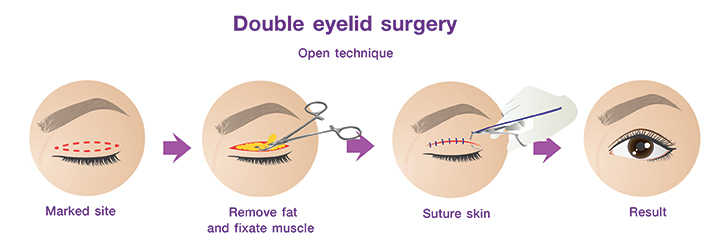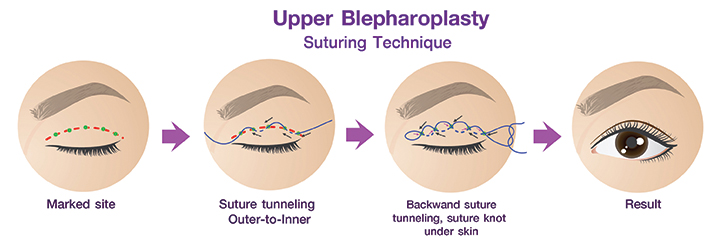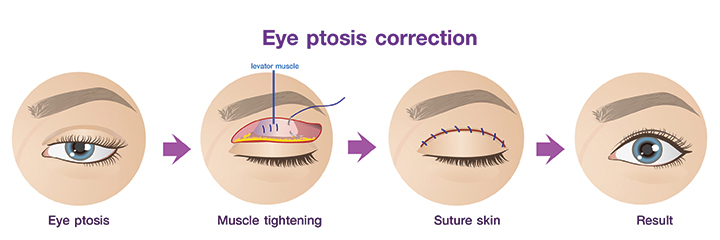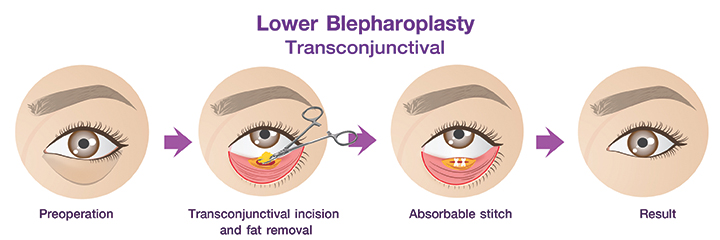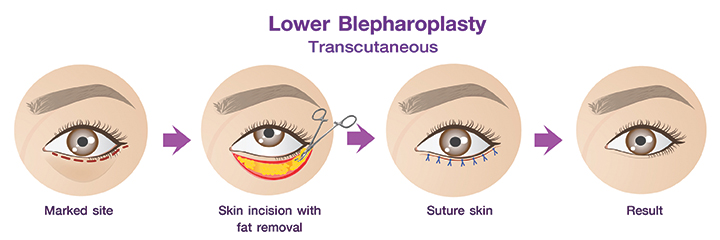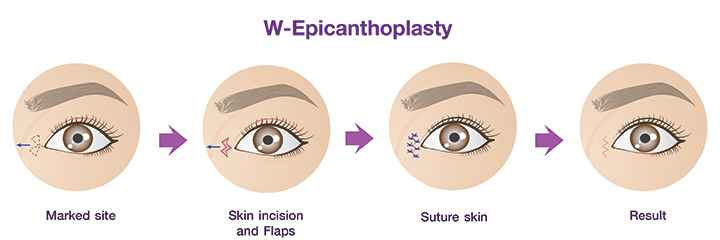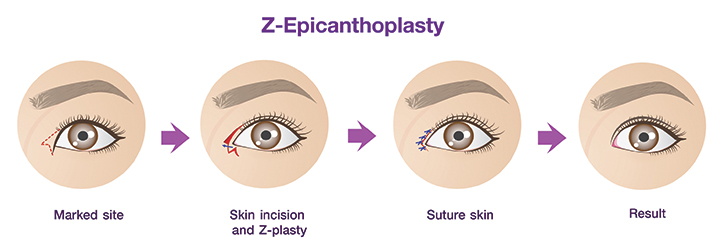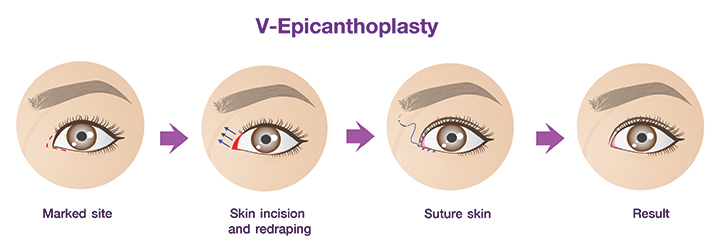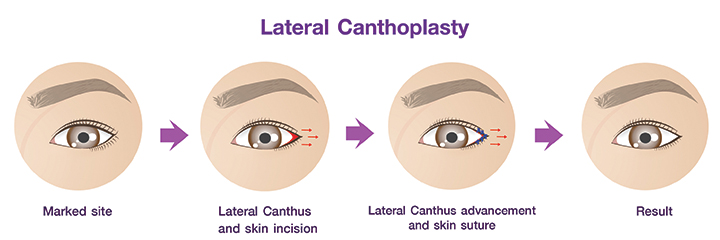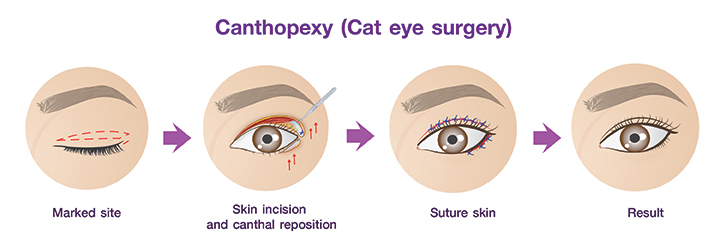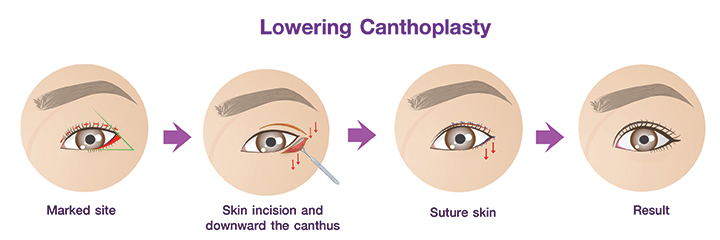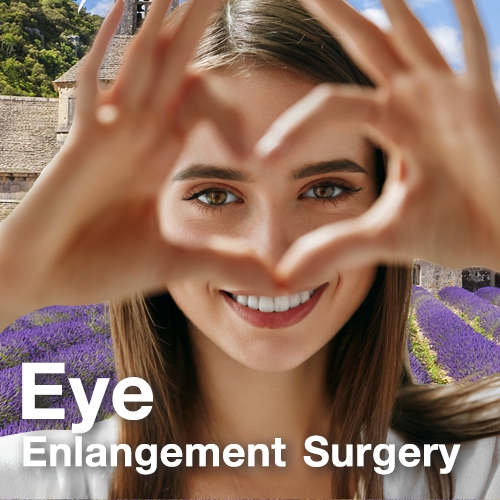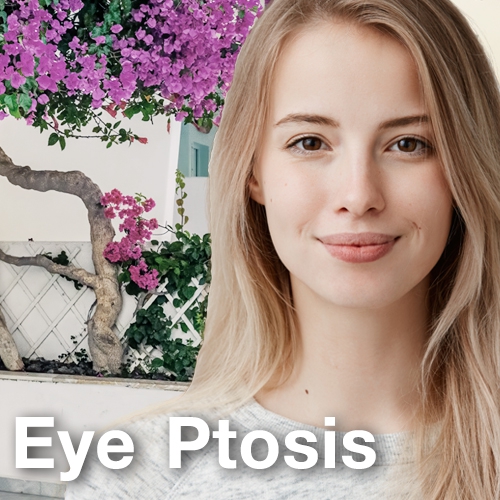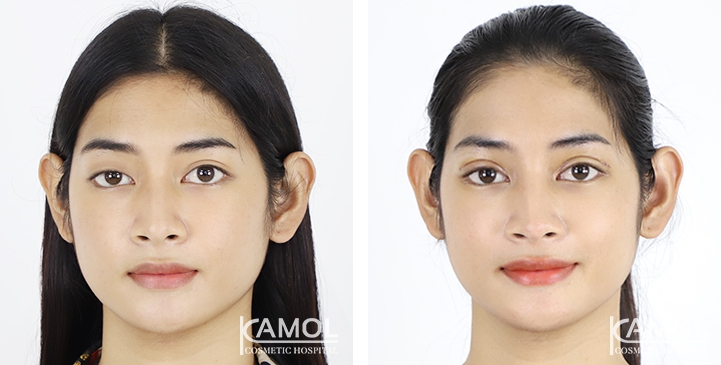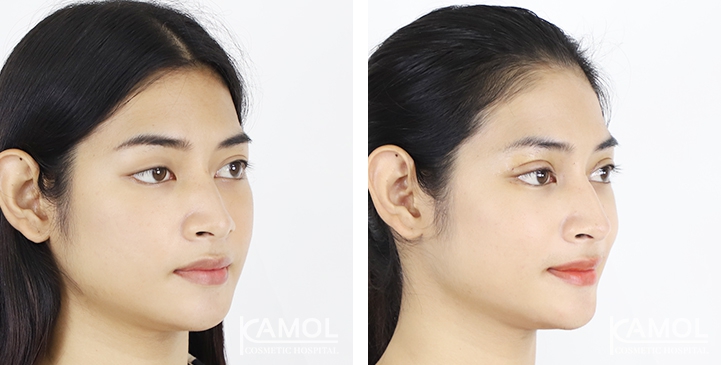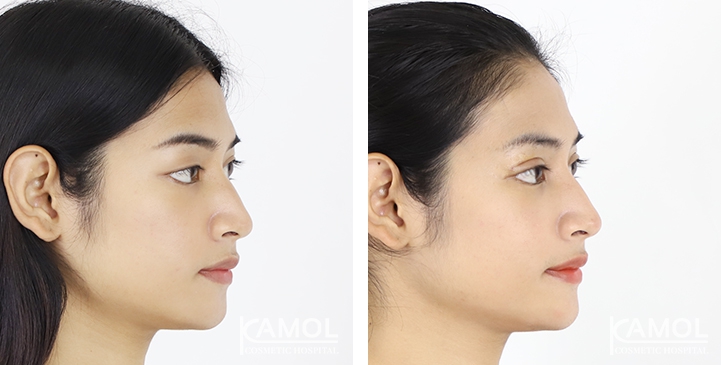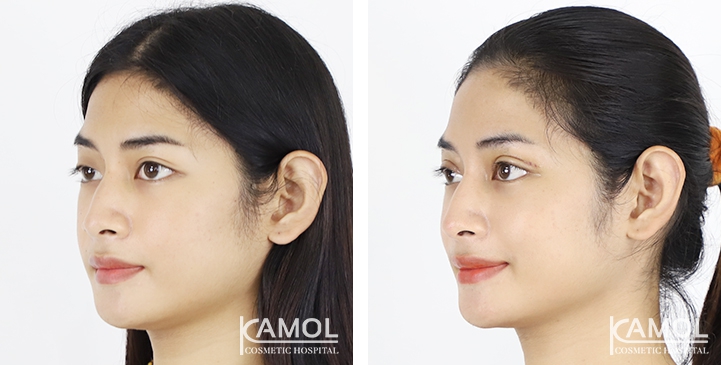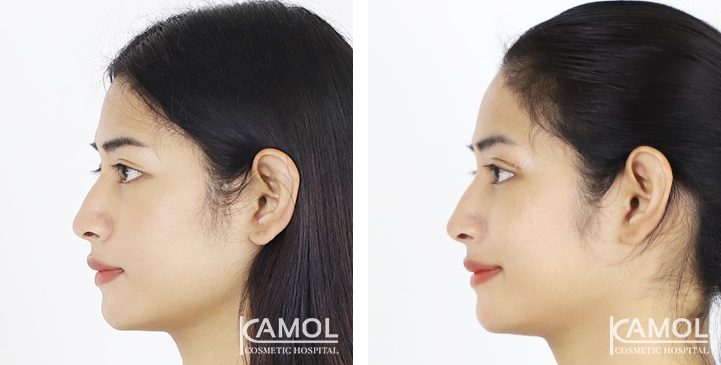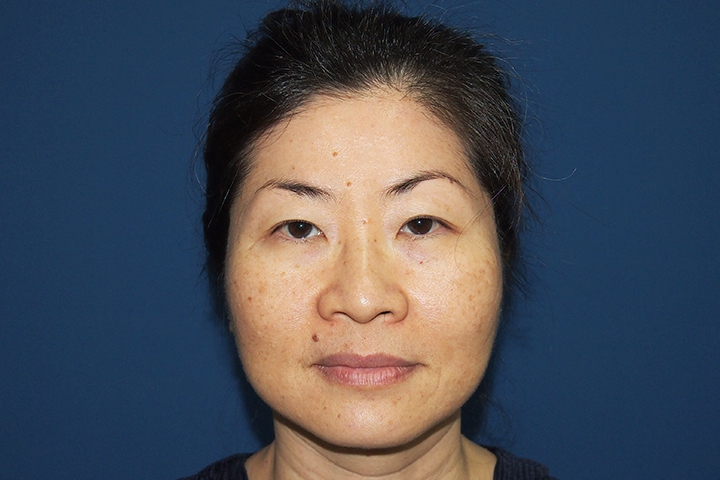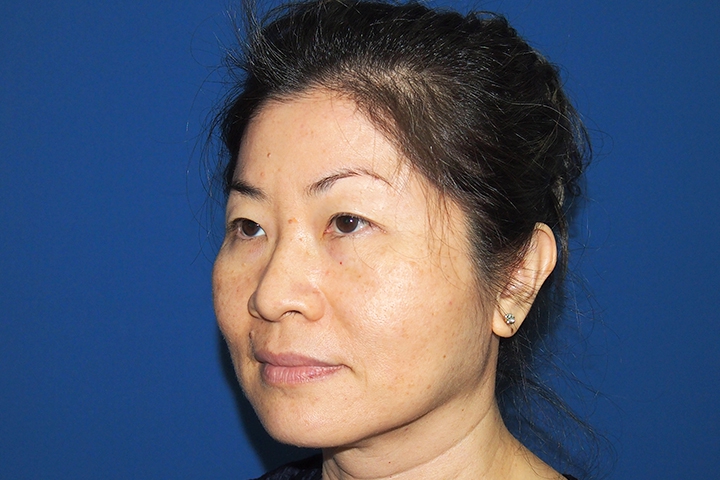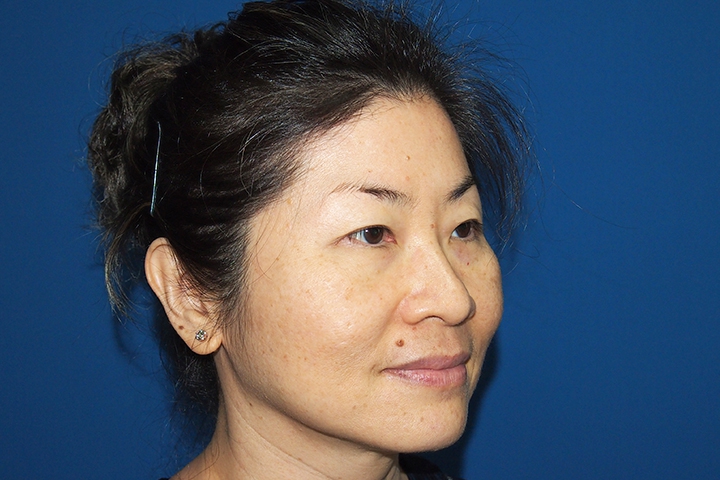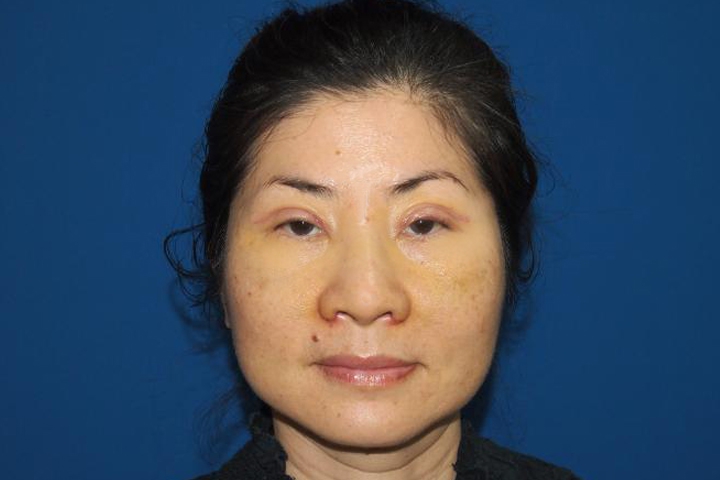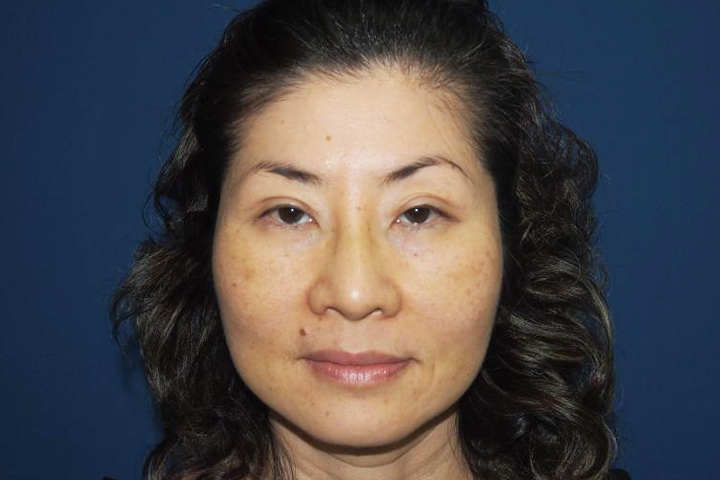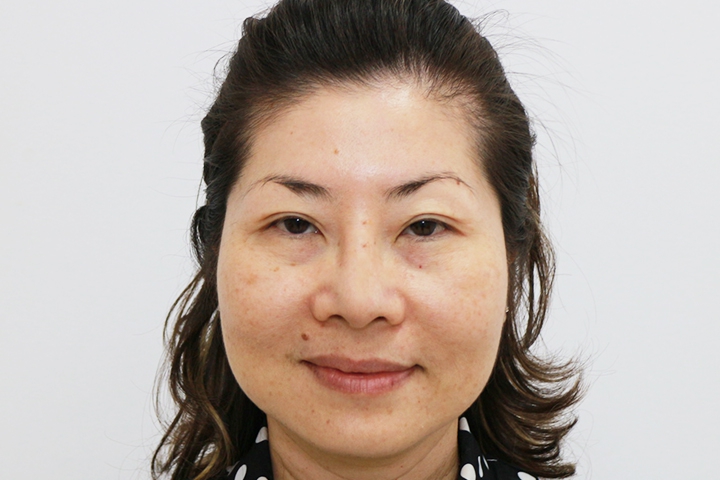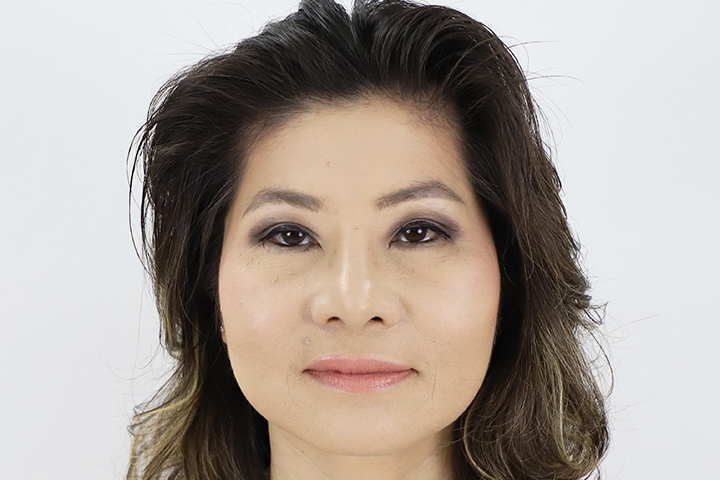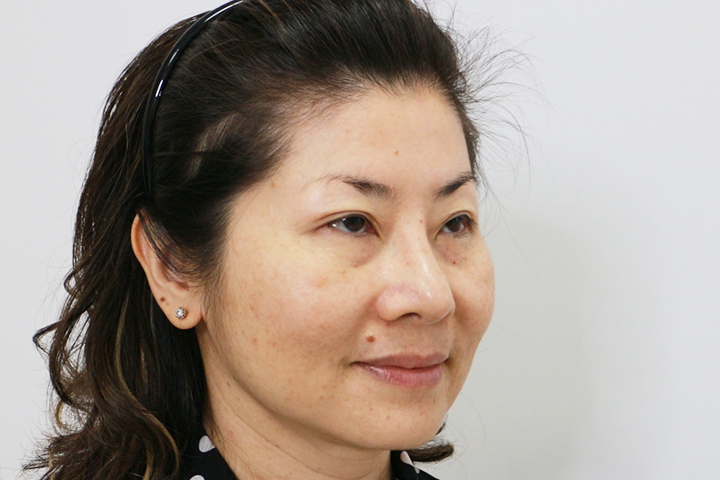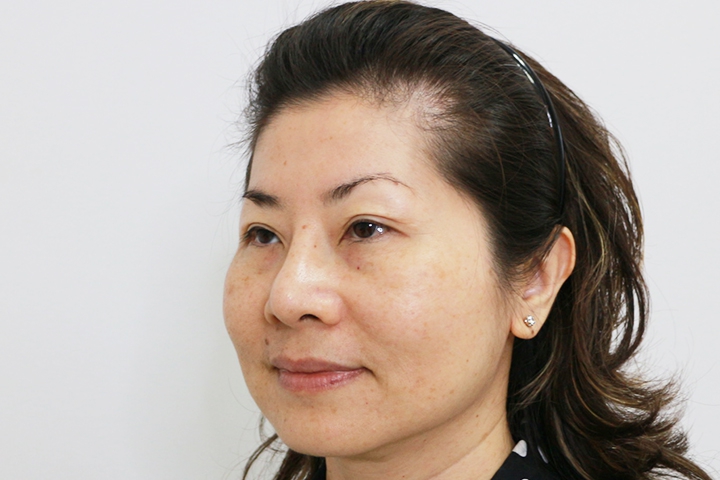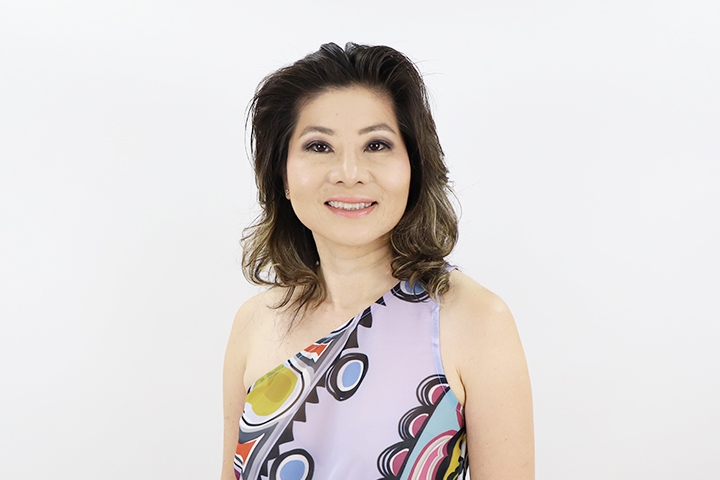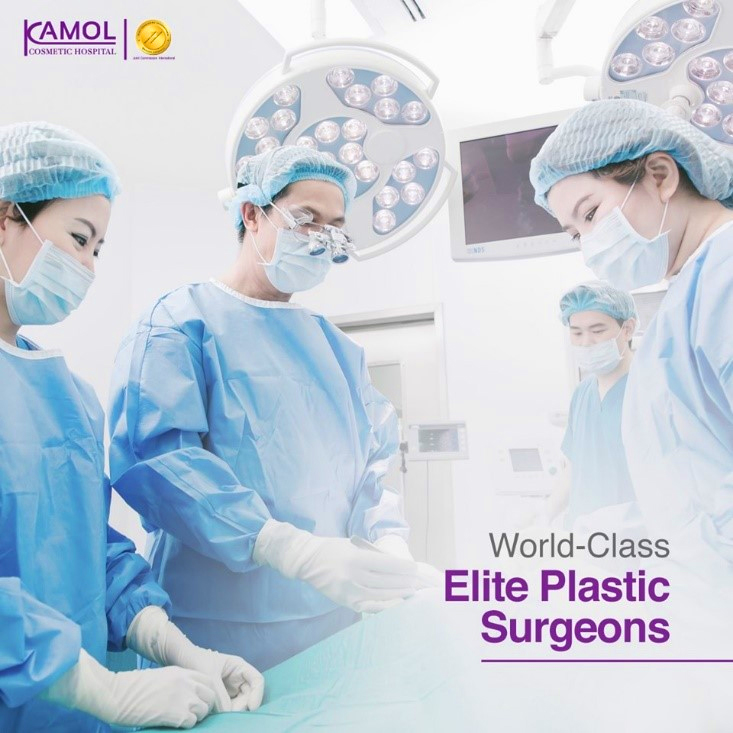Eyelid Surgery. Blepharoplasty
Eyes are commonly referred to as the window to the soul, they form one of the most important aspects of facial expression. The most fashionable eye shape is the classic almond shape with longer curved lashes with thinned eyebrows.
Eyelid surgery or Blepharoplasty is a surgical procedure to improve the appearance of the eyelids. Having bright beautiful eyes makes all the difference to a face. Having an upper eyelid crease is one way to achieve this result and look more youthful. In general, many Asians have no or partial eyelid crease. It is often that the fat inside the eyelid (orbital fat) makes the crease look less visible thereby reducing the brightness of the eyes.
Kamol Cosmetic Hospital has a number of procedures for eyelid surgery to adjust the shape and size of your eyes to make them more attractive and proportionate. The procedures are as follows:
1. Double eyelid surgery
This is a popular surgical procedure for Asian people due to smaller eyes, single eyelids, or double eyelids that are not clear. We offer two techniques for double eyelid surgery as follows:
1.1 Double eyelid surgery by the open technique: The surgeon makes an incision into the eyelid crease, removes fat and excess skin and makes the desired aesthetics before stitching closed to create a new eyelid crease as picture 1.
Picture 1. Shows the procedure for Double eyelid surgery by open technique.
1.2 Double eyelid surgery by the Suturing technique: The surgeon marks 6 points on the new eyelid crease then inserts the suture (thread) in and out the muscle and passes it through the marked points from the anterior eyelid skin to the posterior. Finally the suture is embedded under the skin to fixate the double eyelids as picture 2
Picture 2. Shows the procedure for Double eyelid surgery by the Suturing technique.
2. Eye Ptosis Correction
Eye ptosis surgery is a surgical procedure to correct the drooping of the eyelid that often develops with age. There are many methods for eye ptosis correction and the method used depends on the severity of eye ptosis. If the patient has only mild or moderate eye ptosis, the surgeon can fixate Levator application. If the patient has severe ptosis the surgeon will use the frontalis muscle flap from the forehead to fix with the tarsal plate making the eye more open. As in picture 3.
Picture 3. Shows the eye ptosis correction procedure.
3. Lower Eyelid Surgery
A tell tale sign of an aging face often includes dark rings, wrinkles and sagging below the eyes. Lower eyelid surgery is a cosmetic procedure to correct loose skin, excess fat, and wrinkles of the lower eyelid making the under-eye smoother and significantly more youthful looking. This procedure can take a decade or more off someone's perceived age. There are two methods for lower eyelid surgery as follows:
3.1 Transconjunctival lower eyelid surgery. This procedure is suitable for someone who has eye bags but skin and tissue that still has good elasticity. The surgeon will remove the excess fat through the incision in the conjunctiva and then close the incision with dissolvable stitches. The eyes will look entirely natural without any visible scar as in picture 4
Picture 4. Shows the transconjunctival lower eyelid surgery procedure.
3.2 Transcutaneous lower eyelid surgery. This procedure is used for those with sagging skin, bags or wrinkles who have less elasticity of the lower eyelid. The incision is made just below the lower eyelash, excess fat is removed, the muscle is fixated, excess skin is removed and sutures (stitches) are made. See picture 5
Picture 5. Shows the transcutaneous lower eyelid procedure.
4. Epicanthoplasty
A cosmetic procedure to reduce the “Mongolian fold” or Epicanthic fold of the eyes. The Mongolian fold is the skin of the upper eyelids which covers the inner corner of the eyes. Epicanthoplasty involves making a very small incision on the inner corner of the eyes to improve the shape resulting in bigger and brighter eyes. People usually combine Epicanthoplasty with double eyelid surgery to create a more beautiful eye shape.
Kamol Cosmetic Hospital offers three techniques for Epicanthoplasty are as follows:
4.1 W-Epicanthoplasty. The surgeon makes a W-shape line at the inner corner of the eyes. This method is available for someone who has a severe degree of Mongolian fold. The angle and extent of medial canthus dissection can be flexibly adjusted as seen in picture 6
Picture 6. Shows W- Epicanthoplasty procedure.
4.2 Z -Epicanthoplasty. This method changes the direction of the inner corner and does not require any skin resection (removal). The scar is less visible than W-shape. It is suitable for someone who has a moderate Mongolian fold. See picture 7.
Picture 7. Shows Z- Epicantoplasty procedure.
4.3 V-Epicanthoplasty. This method is suitable for a mild Mongolian fold. It keeps the tip of the medial canthus pointed slightly downward. The surgeon must control the degree of the dissection to achieve natural results. See picture 8.
Picture 8. Shows V- Epicanthoplasty procedure.
5.Canthoplasty
Canthoplasty is a surgical procedure to improve the lateral Canthus to be balanced and have a natural appearance. There are numerous methods for lateral Canthoplasty such as:
5.1 Lateral Canthoplasty. This is a cosmetic surgery to create a change in the horizontal dimension of the eye. It can enlarge the outer edge of the eye by around 2-3 mm. It can be performed alongside a double eyelid surgery. Epicanthoplasty makes the eye significantly larger and brighter. See picture 9.
Picture 9. Shows Lateral Canthoplasty procedures.
5.2 Canthopexy (Cat eyes) This is a minor surgical procedure that strengthens and stabilizes the lateral canthal tendon to tighten a drooping lower eyelid or ectropion. This method repositions the outside corner of the eye where the eyelids meet, restoring a youthful look. It can uplift the eye around 5 mm. See picture 10.
Picture 10. Shows Canthopexy (Cat eye surgery) procedures.
5.3 Lowering Canthoplasty In some East Asian people the Lateral Canthus is too high and can look unnatural. Lower Canthoplasty can move the Canthus downward around 3-5 mm. Incisions are made in the upper and lower eyelids. The Canthal ligament is repositioned and then adjusted to balance and shape the eye. See picture 11.
Picture 11. Shows Lowering Canthoplasty procedures.
Post-operative Care for Blepharoplasty
- For two to four hours after the surgery a cold pack (or cold towel or gel pack) must be placed over the wound to reduce swelling.
- Sleep and rest with the head slightly elevated to reduce swelling for a week.
- The patient must take extra caution when coughing or sneezing to prevent bleeding after the surgery.
- Refrain from smoking, drinking alcoholic beverages and eating salty, spicy, preserved/pickled food for 1-2 weeks.
- 24 hours after the surgery, the plaster may be removed and the face can be cleaned with a moist cloth.
Risks and Complications for Blepharoplasty or eyelid surgery:
Risks and complications with blepharoplasty or eyelid surgery are rare but are as follows:
- Swelling and bruising
- Bleeding from the incision line
- Dryness to the eyes
- Sensitivity to the sun or other bright light
- Difficult to close your eyes
- Ectropion from lower eyelid surgery
- Infection
- Pain
- Scarring
- A temporary or permanent change in vision (extremely rare)
Recovery for Blepharoplasty or eyelid surgery
During the first week of recovery you will feel discomfort from swelling, bruising, irritation, and dry eyes. This can be controlled with medication, cold compress, and ointment. Eyelid surgery will involve a little bit of pain, swelling, and bruising. Ten days after surgery most patients can go back to work.
Getting to Know for Eyelid Surgery, Blepharoplasty
Eye Enlargement Surgery
Eye Enlargement Surgery
Cat Eye / Fox Eye
Cat Eye / Fox Eye
Eye Ptosis
Eye Ptosis
Before and After Blepharoplasty, Eyelid Ptosis
Reviews Eyelid Surgery / Blephalaplasty
Video: Blepharoplasty
Why Kamol Hospital os the destination for Eye Reshaping?
Kamol Cosmetic Hospital is a highly respected and well-established center for cosmetic surgery, specifically for eyelid reshaping procedures. There are several reasons why Kamol Cosmetic Hospital is considered the destination for eyelid reshaping procedures:
- Expertise and Experience: Kamol Cosmetic Hospital is staffed by a team of highly skilled and experienced plastic surgeons who specialize in eyelid reshaping procedures. These surgeons have years of experience and have performed thousands of procedures, which means that they have the expertise to achieve the best possible results for their patients.
- Advanced technology and equipment: Kamol Cosmetic Hospital is equipped with the latest technology and equipment to ensure that patients receive the best possible care. This includes the use of advanced surgical techniques such as laser eyelid surgery, which can be less invasive and less painful than traditional methods.
- Personalized treatment plans: Kamol Cosmetic Hospital takes a personalized approach to treatment, which means that each patient's procedure is tailored to their unique needs and goals. This ensures that each patient receives the best possible results and has a positive experience.
- Comprehensive care: Kamol Cosmetic Hospital provides comprehensive care to their patients, which includes pre-operative consultations, post-operative care and follow-up appointments. This ensures that patients receive the best possible care throughout the entire process.
- High patient satisfaction: Kamol Cosmetic Hospital has a reputation for achieving high patient satisfaction with the results of their eyelid reshaping procedures. Patients have reported feeling happier with their appearance and more confident after the surgery.
- Convenient location: Kamol Cosmetic Hospital is conveniently located in Bangkok, Thailand. It is easily accessible from all over the world, which makes it a popular destination for patients from all over the world.
Overall, Kamol Cosmetic Hospital is a top-notch facility that offers excellent care and expertise for eyelid reshaping procedures. With their advanced technology, personalized treatment plans and comprehensive care, patients can feel confident that they will receive the best possible results.


